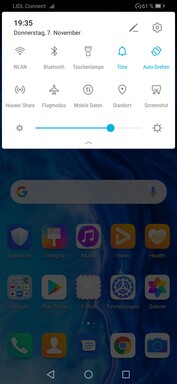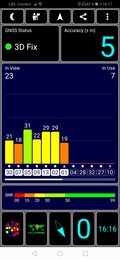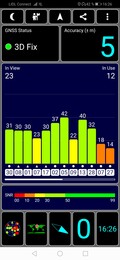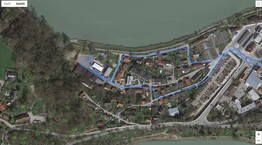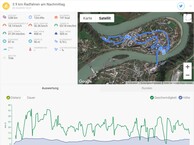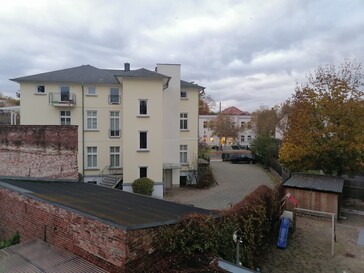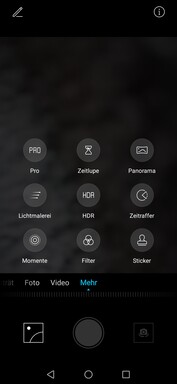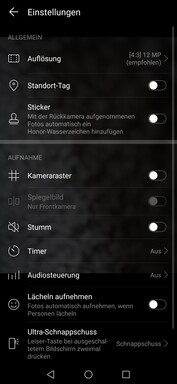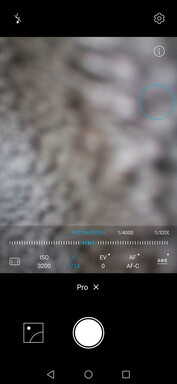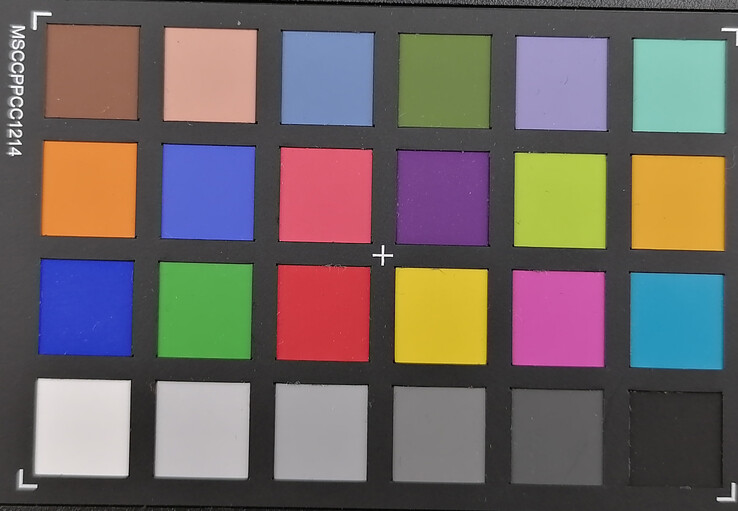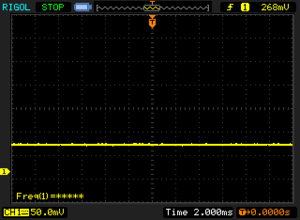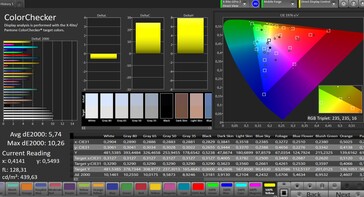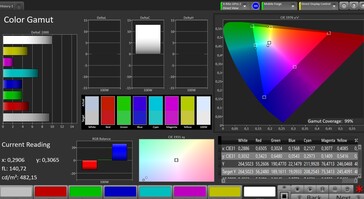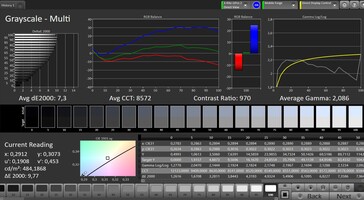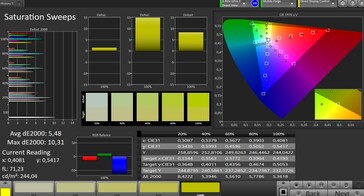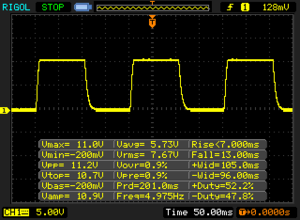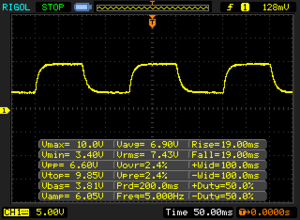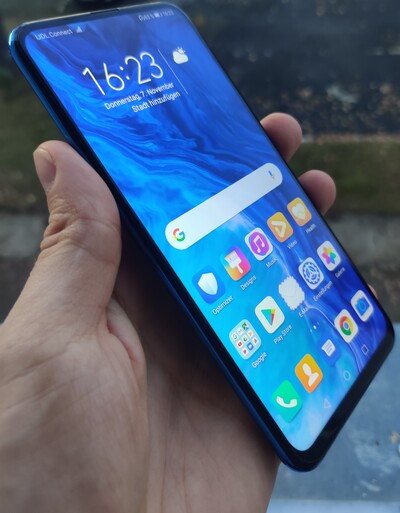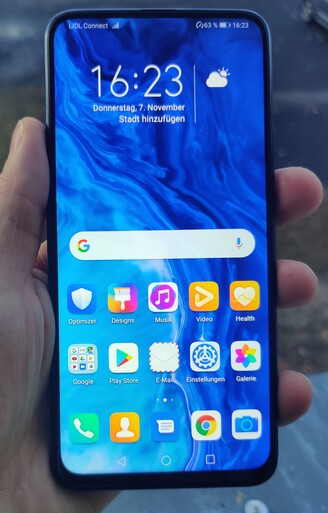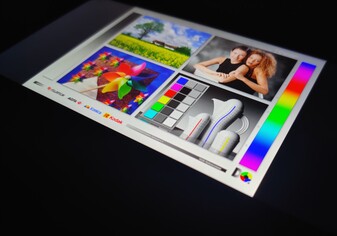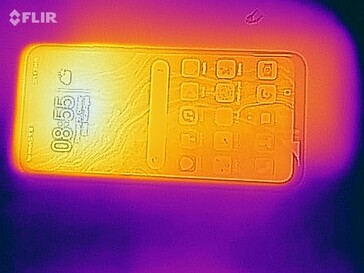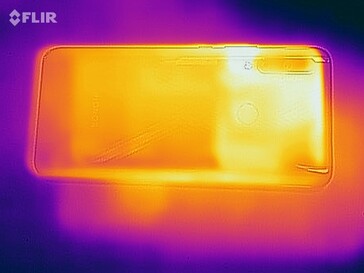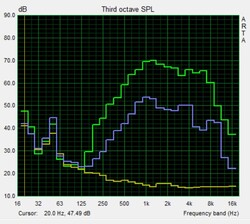Honor 9X Smartphone Review: A new Huawei smartphone with Google Play Services

The Honor 9X is a tale of two handsets. On the one hand, the company has released a HiSilicon Kirin 810-powered model that comes without Google Services. On the other, there is the Kirin 710F-powered edition that launches with Google Services. Honor is pricing both versions identically too.
Essentially, the Honor 9X launching in Europe is a re-branded Huawei P Smart Z, which we reviewed earlier this year, but with slighter faster storage and an improved primary camera sensor. More on what the F in the Kirin 710F means later. We have included an overview below of the Honor 9X and the devices against which we will be comparing it.
Device comparison table
Rating | Date | Model | Weight | Drive | Size | Resolution | Price |
|---|---|---|---|---|---|---|---|
| 75.7 % v7 (old) | 11 / 2019 | Honor 9X Kirin 710, Mali-G51 MP4 | 197 g | 128 GB UFS 2.1 Flash | 6.59" | 2340x1080 | |
| 83.5 % v6 (old) | 06 / 2019 | Huawei P Smart Z 2019 Kirin 710, Mali-G51 MP4 | 197 g | 64 GB eMMC Flash | 6.59" | 2340x1080 | |
| 80.7 % v7 (old) | 11 / 2019 | Xiaomi Redmi Note 8 Pro Helio G90T, Mali-G76 MP4 | 200 g | 128 GB UFS 2.0 Flash | 6.53" | 2340x1080 | |
| 83.9 % v6 (old) | 04 / 2019 | Sony Xperia 10 SD 630, Adreno 508 | 162 g | 64 GB eMMC Flash | 6.00" | 2520x1080 | |
| 81.6 % v7 (old) | 07 / 2019 | Xiaomi Mi 9T SD 730, Adreno 618 | 191 g | 64 GB UFS 2.0 Flash | 6.39" | 2340x1080 | |
| 79.8 % v7 (old) | 04 / 2019 | Samsung Galaxy A50 Exynos 9610, Mali-G72 MP3 | 166 g | 128 GB UFS 2.1 Flash | 6.40" | 2340x1080 |
Case - A pop-up camera and a plastic back
The 6.59-inch display with which Honor has equipped the Honor 9X does away with a punch-hole or notch, which is a welcome change from the other midrange handsets that we have covered recently. Honor has achieved this interrupted display by hiding the front-facing camera within the chassis of the device. The camera appears from the top edge of the frame when you want to use it courtesy of a motorised housing, and it then returns within the chassis when you are done taking selfies.
Honor claims that the device has a 91% screen-to-body ratio, which would be unrivalled for a midrange smartphone. Our measurements return an 84% ratio though, a far cry from Honor's claim. Regardless, an 84% screen-to-body ratio is much higher than many other modern midrange handsets.
The modern design extends to the rear, which has a subtly curved back. Honor currently offers the device with Phantom black and Phantom blue back panels, which both look like glass in marketing photos. However, our review unit definitely has a plastic back, and it is one that feels rather cheap with the hollow feedback that it produces. The device has a plastic frame too, something that is also not necessarily obvious from the photos that Honor has provided.
Our review unit is well-built other than its hollow back panel though. Hence, our complaints are rather minor here.
Connectivity - 128 GB of storage, a headphone jack and fingerprint sensor, but no always-on display
Honor has included a 3.5 mm jack, a fingerprint sensor, and 128 GB of UFS 2.1 flash storage. The device supports Miracast and USB OTG too. There is no status LED or always-on display, though. The device supports up to 512-GB microSD cards too if 128 GB is not enough, and it also supports the exFAT file system.
Software - EMUI 9.1 and outdated security patches
The Honor 9X ships with EMUI 9.1, an in-house version of Android 9.0 Pie. Honor had pushed the August 2019 set of security patches to our review unit at the time of testing in November, making them a touch outdated.
The device comes with Google Services preinstalled, which means that the standard suite of Google apps also make an appearance. Honor includes several in-house apps too.
Communication & GPS - Slow Wi-Fi but accurate GPS
The Honor 9X supports up to IEEE 802.11ac and can connect to 2.4 GHz or 5 GHz Wi-Fi networks. Theoretically, the device should have achieved decent transfer speeds during our tests, but the opposite proved the case as our comparison tables below demonstrate. We tested the Honor 9X with the same Linksys EA8500 as we used with all our comparison devices, but it could only average a measly 156 Mb/s across both iperf3 Client Wi-Fi tests we ran. In short, the Honor 9X has comparatively slow Wi-Fi performance for a 300-Euro (~$331) smartphone released in 2019.
The device also supports relatively few LTE bands. The eight bands that it utilises are enough for LTE coverage within Europe, especially as it supports the increasingly more frequently used Band 28. You may struggle to find a network outside of that region, though.
The Honor 9X has two nanoSIM card slots and supports LTE on both. Its second SIM-card slot is a hybrid one though, meaning that you must compromise between dual-SIM functionality and microSD card expansion; you cannot have two SIM cards and a microSD card inserted simultaneously.
There is an NFC chip onboard too, along with Bluetooth 4.2. We should point out that the latter is a bit outdated now, with other midrange devices having graduated to the newer Bluetooth 5.0 standard.
| Networking | |
| iperf3 transmit AX12 | |
| Xiaomi Redmi Note 8 Pro | |
| Xiaomi Mi 9T | |
| Samsung Galaxy A50 | |
| Sony Xperia 10 | |
| Huawei P Smart Z 2019 | |
| Honor 9X | |
| iperf3 receive AX12 | |
| Xiaomi Redmi Note 8 Pro | |
| Sony Xperia 10 | |
| Xiaomi Mi 9T | |
| Samsung Galaxy A50 | |
| Huawei P Smart Z 2019 | |
| Honor 9X | |
Our review unit achieved a satellite fix with up to five metres accuracy regardless of where we tested it. While not at the levels of flagship smartphones, the Honor 9X performs comparatively well for a midrange device.
We also took the Honor 9X on a bike ride to test its location accuracy against a Garmin Edge 520, one of our reference bike computers. Again, our review unit surprised us with its accuracy, with it only recording a 10-metre longer route than the Garmin did over our 3.9 km test route. We would have expected a significantly higher deviation from a 300-Euro (~$331) smartphone, so the Honor 9X has done exceptionally well in this regard. In short, you should encounter no issues with using the Honor 9X for all navigation tasks.
Telephone Features & Call Quality - Wi-Fi calling
While the Honor 9X supports Wi-Fi calling, we could not find a corresponding option for enabling voice over LTE (VoLTE). Your carrier must have provisioned the Honor 9X on its network before Wi-Fi calling will work, though.
We experienced no issues with our review unit during our call tests. Both the microphone and earpiece worked well, so you need not resort to using headphones if you are making a call on the Honor 9X.
Cameras - A pop-up selfie camera and a 48 MP primary rear-facing sensor
The Honor 9X has four cameras, the primary one of which is a Sony IMX582. Honor complements the 48 MP and f/1.8 aperture sensor with a 2 MP depth-of-field and 8 MP ultra-wide-angle sensors. The latter has an f/2.4 aperture and 120° field of view for reference. The 16 MP front-facing sensor completes the camera array.
The IMX582 has a Quad Bayer colour filter that allows it to combine four adjacent pixels into one, theoretically creating more detail per pixel in a 12 MP image. The Honor 9X shoots in 12 MP by default.
The primary camera sensor performs well in daylight, with our review unit producing shots that are detailed and sharp. While not on par with modern flagships, the IMX582 delivers good enough image quality in our opinion for devices at this price. However, the sensor struggles in low-light scenarios, just as it did during our Xiaomi Mi 9T review.
Undoubtedly, one of the highlights of the Honor 9X is its motorised front-facing camera, perhaps thanks to the novelty of it alone. The 16 MP sensor is not a selfie specialist, though. On the contrary, our review unit tends to overexpose photos as it does in the P Smart Z. We noticed image artefacts during our tests too.
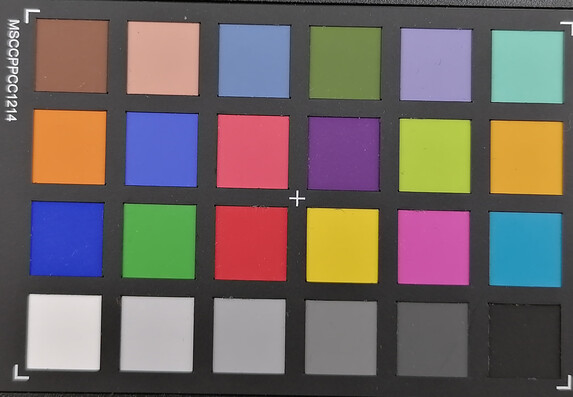
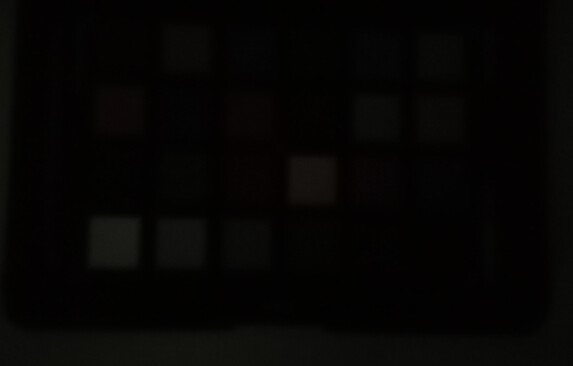
Accessories and Warranty - A few accessories and 24-month warranty
Our review unit arrived with a 10 W modular charger, a matching USB cable, and some headphones in the box. There is also a SIM tool and a quick-start guide and even a silicone case as well.
The Honor 9X comes with a limited 24-month manufacturer's warranty. Please see our Guarantees, Return Policies & Warranties FAQ for country-specific information.
Input Devices & Operation - A fingerprint sensor and 2D face unlock
Honor has placed the fingerprint sensor on the back of the device, which worked reliably during our tests. The scanner does not unlock our review unit particularly quickly though, with there being about a two-second delay before the screen wakes. It will take about two seconds for the Honor phone to unlock.
While the device does not offer any other forms of biometric authentication, you can use its front-facing camera for unlocking the device with your face. However, this is not as secure as using a fingerprint, password, pattern or PIN. Moreover, face unlock is much slower than these other methods, as you must wait for the front-facing camera to appear.
The Honor 9X also has a capacitive touchscreen that recognises up to 10 points simultaneously. The one in our device recognised inputs quickly and precisely, so we have no complaints here.
Display - A dark and low-contrast IPS panel
The Honor 9X has a 6.59-inch IPS panel that resolves natively at 2340x1080. The 19.5:9 aspect ratio display looks sharp enough for everyday use in our opinion, although its maximum brightness could be higher. X-Rite i1Pro 2 recorded its average peak brightness at 483 cd/m² with an evenness of 94%, putting it slightly ahead of the P Smart Z. However, it is noticeably darker than our other comparison devices, especially the Redmi Note 8 Pro and Samsung Galaxy A50. Incidentally, the display gets roughly as bright when set to manual brightness as when we left the ambient light sensor enabled.
| |||||||||||||||||||||||||
Brightness Distribution: 94 %
Contrast: 969:1 (Black: 0.51 cd/m²)
ΔE ColorChecker Calman: 5.74 | ∀{0.5-29.43 Ø4.78}
ΔE Greyscale Calman: 7.3 | ∀{0.09-98 Ø5}
99% sRGB (Calman 2D)
Gamma: 2.086
CCT: 8572 K
| Honor 9X LCD IPS, 2340x1080, 6.6" | Huawei P Smart Z 2019 LCD IPS, 2340x1080, 6.6" | Xiaomi Redmi Note 8 Pro IPS, 2340x1080, 6.5" | Sony Xperia 10 IPS-LCD, 2520x1080, 6" | Xiaomi Mi 9T AMOLED, 2340x1080, 6.4" | Samsung Galaxy A50 AMOLED, 2340x1080, 6.4" | |
|---|---|---|---|---|---|---|
| Screen | -2% | 23% | 19% | 38% | 31% | |
| Brightness middle (cd/m²) | 494 | 439 -11% | 669 35% | 547 11% | 589 19% | 644 30% |
| Brightness (cd/m²) | 483 | 431 -11% | 630 30% | 525 9% | 589 22% | 628 30% |
| Brightness Distribution (%) | 94 | 92 -2% | 87 -7% | 93 -1% | 96 2% | 91 -3% |
| Black Level * (cd/m²) | 0.51 | 0.36 29% | 0.42 18% | 0.36 29% | ||
| Contrast (:1) | 969 | 1219 26% | 1593 64% | 1519 57% | ||
| Colorchecker dE 2000 * | 5.74 | 6.4 -11% | 4.8 16% | 4.6 20% | 2.5 56% | 2.64 54% |
| Colorchecker dE 2000 max. * | 10.26 | 12.1 -18% | 9 12% | 12.1 -18% | 4.9 52% | 9.23 10% |
| Greyscale dE 2000 * | 7.3 | 8.6 -18% | 6.2 15% | 3.9 47% | 1.6 78% | 2.5 66% |
| Gamma | 2.086 105% | 2.18 101% | 2.24 98% | 2.17 101% | 2.24 98% | 2.024 109% |
| CCT | 8572 76% | 9021 72% | 7846 83% | 7158 91% | 6544 99% | 6649 98% |
* ... smaller is better
Screen Flickering / PWM (Pulse-Width Modulation)
| Screen flickering / PWM not detected | |||
In comparison: 53 % of all tested devices do not use PWM to dim the display. If PWM was detected, an average of 8108 (minimum: 5 - maximum: 343500) Hz was measured. | |||
While the Honor 9X has a brighter and more evenly lit display than the one in the P Smart Z, it also has a considerably higher black value, which we measured at 0.51 cd/m². This not only gives blacks a grey haze but also results in a disappointing 961:1: contrast ratio. All our comparison devices managed at least 1,000:1 during our tests, while those with AMOLED panels have a theoretically infinite contrast ratio.
Moreover, our photo spectrometer and CalMAN software showed that the display suffers from high colour and greyscale deviations from the sRGB colour space, which we measured at 5.7 and 7.3, respectively. Ideally, these would be at 3 or below. The display also has an 8,572 K colour temperature, which is well above our ideal value of 6,500 K. Correspondingly, the display looks overly cool and has a slight bluish tint to it.
Display Response Times
| ↔ Response Time Black to White | ||
|---|---|---|
| 20 ms ... rise ↗ and fall ↘ combined | ↗ 7 ms rise | |
| ↘ 13 ms fall | ||
| The screen shows good response rates in our tests, but may be too slow for competitive gamers. In comparison, all tested devices range from 0.1 (minimum) to 240 (maximum) ms. » 42 % of all devices are better. This means that the measured response time is similar to the average of all tested devices (20.2 ms). | ||
| ↔ Response Time 50% Grey to 80% Grey | ||
| 38 ms ... rise ↗ and fall ↘ combined | ↗ 19 ms rise | |
| ↘ 19 ms fall | ||
| The screen shows slow response rates in our tests and will be unsatisfactory for gamers. In comparison, all tested devices range from 0.165 (minimum) to 636 (maximum) ms. » 54 % of all devices are better. This means that the measured response time is worse than the average of all tested devices (31.6 ms). | ||
The Honor 9X has reasonably stable viewing angles, though. While blacks start to look hazy at acute viewing angles, as the photos below demonstrate, the display always remains readable. Likewise, we had no issues with readability outdoors, although the display can look washed-out in direct sunlight.
Performance - A Kirin 710F and 4 GB of RAM do not always make for good company
The Kirin 710F that Honor integrates within the Honor 9X has four ARM Cortex-A73 cores and four ARM Cortex-A53 cores that can reach up to 2.2 GHz and 1.7 GHz, respectively. Arranged on a big.LITTLE architecture like the regular Kirin 710, Huawei has used Flip Chip Chip Scale Package (fcCSP) for the Kirin 710F as its F suffix implies. The SoC integrates an ARM Mali-G51 MP4 GPU like the regular Kirin 710 too.
The Kirin 710F and 4 GB of RAM performs well in synthetic benchmarks, but it falls short of expectations in daily use. In short, it is not on the same level as comparable Qualcomm chips. While EMUI 9.1 generally runs smoothly, we noticed some stuttering when multitasking. Load times are noticeably longer than on competing devices too. We also had the same experience with the Huawei P30 Lite and P Smart Z.
By contrast, the UFS 2.1 flash storage with which Honor has equipped the Honor 9X is fast. As the comparison table below demonstrates, the Honor 9X has faster storage than all our comparison devices.
| AnTuTu v7 - Total Score (sort by value) | |
| Honor 9X | |
| Huawei P Smart Z 2019 | |
| Sony Xperia 10 | |
| Xiaomi Mi 9T | |
| Samsung Galaxy A50 | |
| Average HiSilicon Kirin 710 (124870 - 183420, n=10) | |
| Jetstream 2 - 2.0 Total Score | |
| Average of class Smartphone (23.8 - 387, n=153, last 2 years) | |
| Xiaomi Mi 9T (Chrome 75.0.3770.101) | |
| Xiaomi Redmi Note 8 Pro (Chrome 78) | |
| Honor 9X (Chrome 78) | |
| Huawei P Smart Z 2019 (Chrome 74) | |
| Average HiSilicon Kirin 710 (30 - 33, n=8) | |
| Sony Xperia 10 (Chrome Version 73) | |
| Speedometer 2.0 - Result 2.0 | |
| Average of class Smartphone (15.2 - 643, n=126, last 2 years) | |
| Xiaomi Mi 9T (Chrome 75.0.3770.101) | |
| Xiaomi Redmi Note 8 Pro (Chrome 78) | |
| Honor 9X (Chrome 78) | |
| Samsung Galaxy A50 (Chome 73) | |
| Average HiSilicon Kirin 710 (30.4 - 33.9, n=6) | |
| Octane V2 - Total Score | |
| Average of class Smartphone (2228 - 121337, n=201, last 2 years) | |
| Xiaomi Mi 9T (Chrome 75.0.3770.101) | |
| Xiaomi Redmi Note 8 Pro (Chrome 78) | |
| Samsung Galaxy A50 (Chrome 73) | |
| Huawei P Smart Z 2019 (Chrome 74) | |
| Honor 9X (Chrome 78) | |
| Average HiSilicon Kirin 710 (9041 - 10544, n=13) | |
| Sony Xperia 10 (Chrome Version 73) | |
| Mozilla Kraken 1.1 - Total | |
| Sony Xperia 10 (Chrome Version 73) | |
| Average HiSilicon Kirin 710 (3999 - 4853, n=13) | |
| Honor 9X (Chrome 78) | |
| Huawei P Smart Z 2019 (Chrome 74) | |
| Samsung Galaxy A50 (Chrome 73) | |
| Xiaomi Redmi Note 8 Pro (Chrome 78) | |
| Xiaomi Mi 9T (Chrome 75.0.3770.101) | |
| Average of class Smartphone (257 - 28190, n=156, last 2 years) | |
* ... smaller is better
| Honor 9X | Huawei P Smart Z 2019 | Xiaomi Redmi Note 8 Pro | Sony Xperia 10 | Xiaomi Mi 9T | Samsung Galaxy A50 | Average 128 GB UFS 2.1 Flash | Average of class Smartphone | |
|---|---|---|---|---|---|---|---|---|
| AndroBench 3-5 | -25% | -6% | -33% | -24% | -29% | 3% | 305% | |
| Sequential Read 256KB (MB/s) | 860 | 304.3 -65% | 535 -38% | 273.8 -68% | 492.7 -43% | 507 -41% | 761 ? -12% | 2226 ? 159% |
| Sequential Write 256KB (MB/s) | 196.1 | 191.8 -2% | 193.5 -1% | 232.9 19% | 179.2 -9% | 192.1 -2% | 296 ? 51% | 1848 ? 842% |
| Random Read 4KB (MB/s) | 142.3 | 94.1 -34% | 156.2 10% | 53.1 -63% | 128.6 -10% | 98.9 -30% | 154 ? 8% | 295 ? 107% |
| Random Write 4KB (MB/s) | 159.3 | 78 -51% | 180.4 13% | 14.39 -91% | 107.8 -32% | 18.2 -89% | 130.4 ? -18% | 335 ? 110% |
| Sequential Read 256KB SDCard (MB/s) | 76.2 ? | 76.4 ? 0% | 71.6 ? -6% | 83.2 ? 9% | 73.9 ? -3% | 76 ? 0% | ||
| Sequential Write 256KB SDCard (MB/s) | 67.1 ? | 67.5 ? 1% | 57.3 ? -15% | 63.8 ? -5% | 60.7 ? -10% | 59.6 ? -11% |
Games - Smooth frame rates at high graphics settings
The midrange GPU is based on ARM's Bifrost architecture and uses four of a possible 12 cores. The Mali G51 supports modern graphics standards like DirectX 11, OpenGL ES 3.2, Vulkan 1.0, and Renderscript.
Our review unit is powerful enough to handle all modern games. While titles like Asphalt 9: Legends and PUBG Mobile do not play well at maximum graphics, we encountered no frame rate issues when we set both to high graphics.
Emissions - Hot under load and with an underwhelming speaker
Temperature
The Honor 9X runs hot. While our review unit remains cool when idling, some areas peak at over 40 °C under load. However, you should only notice these during prolonged gaming sessions.
(±) The maximum temperature on the upper side is 41.4 °C / 107 F, compared to the average of 35.2 °C / 95 F, ranging from 21.9 to 247 °C for the class Smartphone.
(±) The bottom heats up to a maximum of 40.7 °C / 105 F, compared to the average of 34 °C / 93 F
(+) In idle usage, the average temperature for the upper side is 28.4 °C / 83 F, compared to the device average of 32.9 °C / 91 F.
Speakers
Honor has equipped the Honor 9X with a mono speaker that is overly quiet. The speaker does not reproduce frequencies linearly either and even distorts at low volumes. As expected, medium and high-pitched frequencies dominate matters, while bass tones are almost inaudible.
There is a 3.5 mm jack though, so you can use any headphones that you have to hand. The headphones that we tested get pleasantly loud, while we noticed no electrical interference.
Honor 9X audio analysis
(±) | speaker loudness is average but good (78 dB)
Bass 100 - 315 Hz
(-) | nearly no bass - on average 24.8% lower than median
(±) | linearity of bass is average (11.7% delta to prev. frequency)
Mids 400 - 2000 Hz
(±) | higher mids - on average 6.3% higher than median
(+) | mids are linear (5.9% delta to prev. frequency)
Highs 2 - 16 kHz
(±) | higher highs - on average 5% higher than median
(±) | linearity of highs is average (7.4% delta to prev. frequency)
Overall 100 - 16.000 Hz
(±) | linearity of overall sound is average (27.8% difference to median)
Compared to same class
» 72% of all tested devices in this class were better, 5% similar, 23% worse
» The best had a delta of 11%, average was 35%, worst was 134%
Compared to all devices tested
» 84% of all tested devices were better, 3% similar, 13% worse
» The best had a delta of 4%, average was 24%, worst was 134%
Huawei P Smart Z 2019 audio analysis
(+) | speakers can play relatively loud (85.1 dB)
Bass 100 - 315 Hz
(-) | nearly no bass - on average 30.4% lower than median
(±) | linearity of bass is average (10.9% delta to prev. frequency)
Mids 400 - 2000 Hz
(+) | balanced mids - only 4.6% away from median
(+) | mids are linear (5% delta to prev. frequency)
Highs 2 - 16 kHz
(+) | balanced highs - only 4.2% away from median
(+) | highs are linear (6.2% delta to prev. frequency)
Overall 100 - 16.000 Hz
(±) | linearity of overall sound is average (23.5% difference to median)
Compared to same class
» 53% of all tested devices in this class were better, 8% similar, 39% worse
» The best had a delta of 11%, average was 35%, worst was 134%
Compared to all devices tested
» 69% of all tested devices were better, 6% similar, 24% worse
» The best had a delta of 4%, average was 24%, worst was 134%
Power Management - High power consumption but solid battery life
Power Consumption
In short, the Honor 9X has comparatively high power consumption. Oddly, the P Smart Z averages significantly lower consumption than its sibling, despite being equipped with almost identical hardware. All our other comparison devices fare better than the Honor 9X here too.
| Off / Standby | |
| Idle | |
| Load |
|
Key:
min: | |
| Honor 9X 4000 mAh | Huawei P Smart Z 2019 4000 mAh | Xiaomi Redmi Note 8 Pro 4500 mAh | Sony Xperia 10 2870 mAh | Xiaomi Mi 9T 4000 mAh | Samsung Galaxy A50 4000 mAh | Average HiSilicon Kirin 710 | Average of class Smartphone | |
|---|---|---|---|---|---|---|---|---|
| Power Consumption | 32% | 32% | 45% | 62% | 35% | 30% | 25% | |
| Idle Minimum * (Watt) | 2.3 | 0.85 63% | 0.79 66% | 0.72 69% | 0.54 77% | 0.8 65% | 1.058 ? 54% | 0.848 ? 63% |
| Idle Average * (Watt) | 3 | 2.4 20% | 2.32 23% | 2.16 28% | 0.95 68% | 1.5 50% | 2.2 ? 27% | 1.434 ? 52% |
| Idle Maximum * (Watt) | 4.2 | 2.43 42% | 2.38 43% | 2.17 48% | 1.08 74% | 1.7 60% | 2.57 ? 39% | 1.618 ? 61% |
| Load Average * (Watt) | 5.3 | 4.62 13% | 4.72 11% | 3.32 37% | 2.7 49% | 5.9 -11% | 4.61 ? 13% | 7.01 ? -32% |
| Load Maximum * (Watt) | 9.4 | 7.44 21% | 7.68 18% | 5.34 43% | 5.4 43% | 8.3 12% | 7.6 ? 19% | 11.3 ? -20% |
* ... smaller is better
Battery Life
The Honor 9X performed surprisingly well in our battery life tests. Its 4,000 mAh battery lasted a respectable 13:52 hours. Only the Redmi Note 8 Pro and Mi 9T lasted longer than our review unit.
The Honor 9X takes just over two hours to recharge fully with its 10 W charger.
| Honor 9X 4000 mAh | Huawei P Smart Z 2019 4000 mAh | Xiaomi Redmi Note 8 Pro 4500 mAh | Sony Xperia 10 2870 mAh | Xiaomi Mi 9T 4000 mAh | Samsung Galaxy A50 4000 mAh | |
|---|---|---|---|---|---|---|
| Battery runtime | ||||||
| WiFi v1.3 (h) | 13.9 | 12.4 -11% | 14.4 4% | 9 -35% | 16.5 19% | 11.7 -16% |
Pros
Cons
Verdict - An inferior rehash
The device that has arrived in Europe feels like a Huawei P Smart Z, principally because it is. Honor has equipped its version with slighter faster internal storage and a better primary camera sensor, but the two devices are otherwise identical save for the Honor 9X also having an inferior speaker.
While the Honor 9X and P Smart Z both launched at around 300 Euros (~$331), the latter can now be had for almost 100 Euros (~$110) off its retail price. Had the two devices launched simultaneously, then it may have been harder to choose between them. However, a slightly better primary camera and faster storage hardly justify spending one-third more for essentially the same device.
The Honor 9X is a decent midrange smartphone that has arrived too late to the party. Go with the P Smart Z or Mi 9T instead.
In short, we would only recommend the Honor 9X over the P Smart Z when they become equally priced. Moreover, if you are willing to spend 300 Euros (~$331) on the Honor 9X, then we would suggest considering the Xiaomi Mi 9T as it represents better value for money and is an all-round better smartphone than the Honor 9X is.
Honor 9X
- 11/08/2019 v7 (old)
Marcus Herbrich









